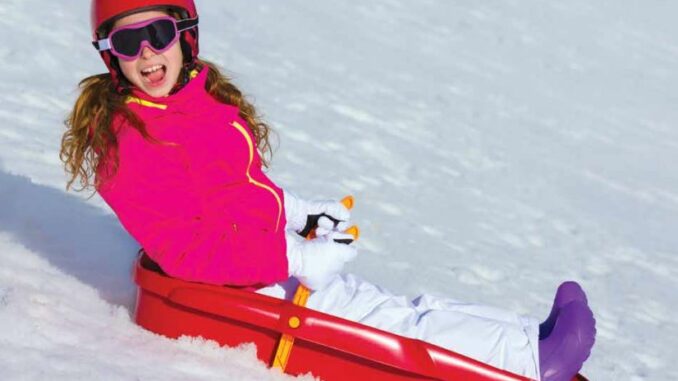
Winter weather doesn’t have to drive you and your family inside; there are plenty of ways to get outside and enjoy the cold.
Of course, winter sports come with some risk, not the least of which is putting your kid on two sticks and sending her off down the mountain. Snowboarding accounts for a quarter of all emergency room visits during the winter, and sledding causes more than 52,000 injuries a year. Learn what you can do to minimize the risk and maximize the fun.
SKIING AND SNOWBOARDING
Make sure your equipment is working and that it fits properly. Get helmets that are specifically designed for skiing or snowboarding, not a bike helmet. Don’t reuse a helmet that’s already taken a big hit. Know your child’s fitness and ability level, take frequent breaks and reinforce the importance of staying on runs that aren’t too hard. Many injuries are caused by lack of control; either the person is moving too fast or going down a slope that’s beyond their ability.
Consider getting professional lessons for your children; even a little time with a teacher can get them comfortable on the mountain, on their skis and with the chairlift. Even on a cloudy day, wear sunglasses and sunscreen. On top of a mountain, you’re closer to the sun, plus light is reflecting off the snow. Sunburns actually occur more easily on a ski trip than on the beach.
SLEDDING
Look into your sledding options. A steerable sled is a good idea; inner tubes, saucers and snow disks put your child at greater risk because they go fast but can’t be steered effectively. Even with no obstacles nearby, that can present a hazard. Also, pick a good place to sled—stay away from steep or icy hills, streets or driveways and areas with trees, walls or cars. Make sure the snow is well-packed; loose snow can be a hazard. Make sure your children can safely walk back up the hill. We recommend that children younger than 12 wear a helmet while sledding. In all winter sports, dress appropriately and watch for signs of frostbite.


